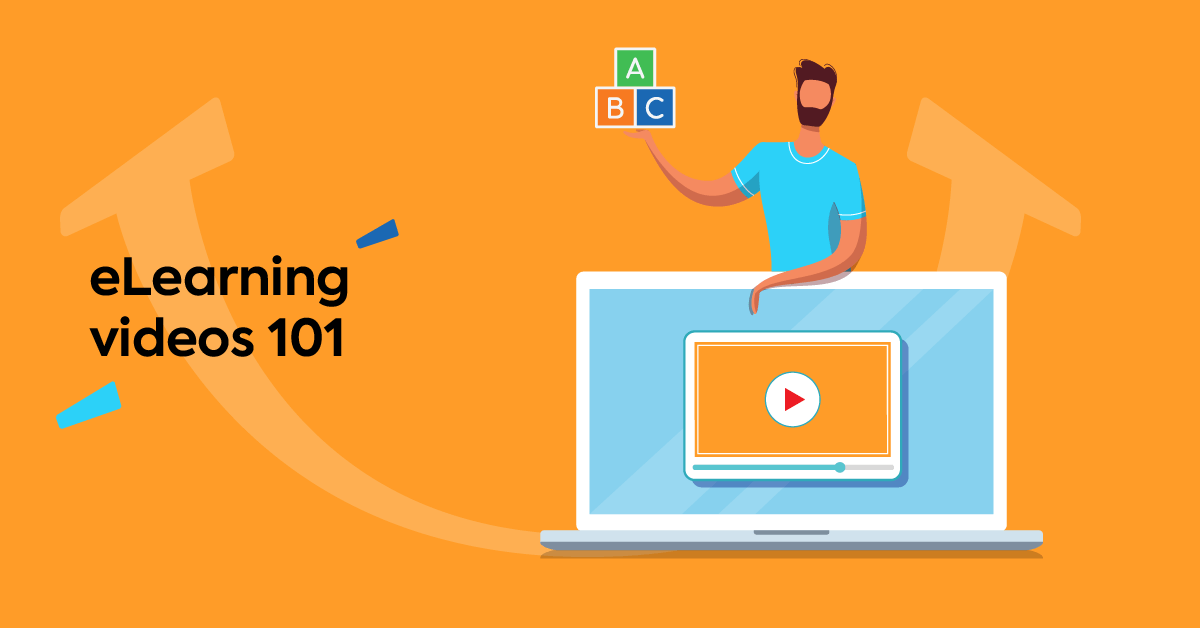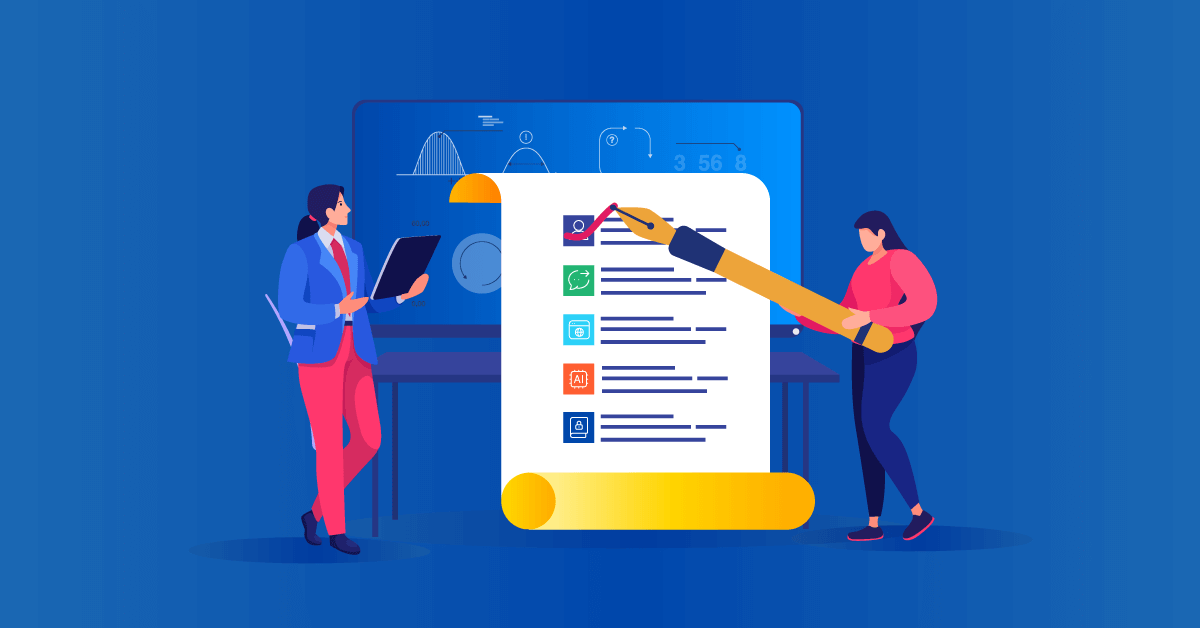Let’s face it. The internet is made of videos. Video is fast becoming the most commonly used format for communicating information online. In fact, by 2022 it’s estimated that 82% of internet traffic will be video. That’s video-conferencing, video in eLearning, and even those funny cat videos on social media.
So, what’s all the fuss about? Well, video is the ultimate show and tell. A combination of audio and visual elements that work together in a magical way to engage people with different preferences for learning new information.
And what does this mean for eLearning?
People can absorb information from various stimuli, including visual, auditory, written, and kinesthetic (this means “learning by doing”). Some prefer a combination of visual and auditory instruction, others learn best when reading, and then there are those who like to be more hands-on in the learning process.
Now, the best thing about an eLearning video is that it encompasses elements from all of these styles of learning in a single format. This makes video one of the most engaging eLearning tools available.
But there’s more! Check out these 5 reasons why video in eLearning is a valuable addition to your training courses.
1. A tool to capture attention
An age-old challenge faced by most instructional designers is learner engagement. Sure, eLearning is a real win for busy employees, because it offers the freedom to learn on the go, from anywhere, at any time. But eLearning can be a lonely journey, relying largely on self-motivation and discipline.
Added to this is an endless reel of distractions every time an internet browser is opened. So it becomes easy for a learner to click away from the LMS and lose focus of the course content (surely even you have done a sneak peek on Facebook from time to time?).
Enter, the video. When done right (we’re talking relevant scripts, complementary graphics, and high-quality recordings), videos happen to be an excellent tool for capturing attention and then keeping that that attention, too.
Video gives instructional designers the opportunity to shape content in ways that are both engaging and entertaining. The creative license here is almost endless, but some of the most popular eLearning video techniques are to use humor, animations, storytelling, chapters, spot questions and even interactivity.
That being said, there are a few things to keep in mind:
- Don’t overload the viewer with useless information (either visual or auditory)
- Make sure you “grab” your viewer’s attention early on in the video
- And make sure that your video isn’t too long.
The last point is pretty important. Studies have shown that view-length (you know, how long someone spends watching the video before hitting the close button) drops sharply once a video is over 6 minutes. So, as hard as this might be, try to separate your videos into short, manageable chunks.
The good news is you don’t have to create those videos from scratch. You can rely on an online library, like TalentLibrary™, with ready-made eLearning videos that tick all the boxes: they’re made of experts, present engaging storylines, and use fun, animated characters. Each video is 2- or 3-minute long so that learners don’t lose interest. And by combining videos, you can create an entire course, like this one about customer service:
Meet TalentLibrary™
A growing collection of ready-made courses that cover the soft skills
your teams need for success at work
![]()

2. Information that’s easy to consume
We all know the not-so-exciting feeling of opening a 20-page document. And the same applies to employee training videos. That 60-minute time stamp on an hour-long video creates a psychological barrier that automatically lessens our ability to absorb all of the information presented.
This is why chunking information can be an effective way of making content more palatable and improving the knowledge retention of your learners. And video in eLearning is one of the best ways to do this. Short, easy-to-consume videos are convenient when learners don’t have the time or capacity to complete a lengthy eLearning activity.
A good approach is to focus each eLearning video, or even chapters within a video, on one important concept or learning objective. For example, if we turned this article into a series of eLearning videos, there’d be a separate video for each of the five reasons we’ve listed.

3. Reach learners on the go
The legend of mobile learning has been foretold for years and now it’s finally arrived. This, along with more affordable mobile data, means that mobile video is becoming more accessible and more widely used than ever before.
Why? Because, as we mentioned above, eLearning videos can deliver short, intensive bursts of information that can be consumed in less time than it would take to read, and with richer information than can be contained in a graphic alone.
It’s easy to see, then, how video in eLearning can lend itself to making courses more compatible with learning on the go. Whether on their morning commute or in an airport lounge, learners are able to engage in this bite-sized training format, no matter how much time they have on their hands.
One thing to keep in mind is making sure your LMS and videos are optimized for mobile streaming.
Reach your learners wherever they are with a mobile LMS
TalentLMS comes with a native mobile app
for seamless training, whether from the desktop or through a small screen
4. Easy sharing and collaboration
One of the video’s many strengths is its shareability. In today’s connected, media-driven world videos that are interesting and engaging can have an impressively far reach. The same goes for video in eLearning.
Videos that are informative, interesting, and relevant are the kind of media that learners will want to share with their colleagues. This means that new knowledge and skills are spreading — without you having to formally enroll all your employees in the course.
Three important elements here will help you to create a healthy social eLearning culture in the workplace:
- Making your videos short and focused
- Making your videos relevant to the learners and their colleagues
- Making your videos entertaining
5. Ideal for “How-to” style training
Video is first and foremost a visual format. Because of this, and the fact that we can manipulate time and point of view in video, it lends itself very well to “how-to” style instructional training. Whether you’re teaching your learners how to bake a cake, fix a car, or use new software, video in eLearning is the perfect way to do this.
With so much control over where the viewer directs their attention, a video is an effective way to show learners the practical steps, processes, or details they need to successfully complete the task at hand. You can do this by recording a simple talking head video.
Then, by breaking the video into chapters or mini videos (depending on the scope) to create information chunks, you’ll help learners to consume at the pace they prefer. Of course, they can also revisit the video at any time in the future for a quick refresher.
Video: The ace up your sleeve
Video is here to stay. It’s one of the fastest-growing areas of the internet, and video in eLearning is at the forefront of that wave. With new technologies and cheaper equipment becoming available almost daily, the possibilities are endless and you only stand to gain from employing this powerful ace-card into your eLearning deck.
Originally published on: 27 Nov 2017 | Tags: eLearning Videos




